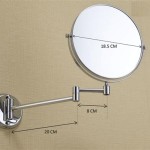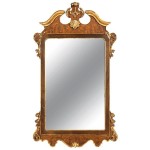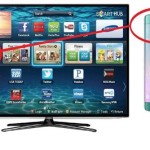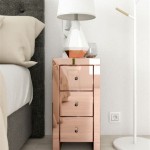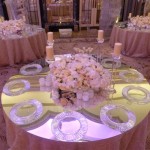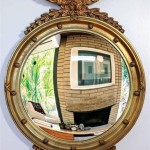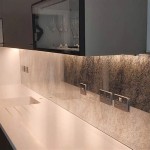How to Hang a Mirror Above Fireplace Mantels
Hanging a mirror above a fireplace mantel is a common interior design choice, offering the potential to enhance a room's aesthetic appeal and create a sense of spaciousness. The mirror serves as a focal point, reflecting light and visually expanding the perceived dimensions of the room. However, the process requires careful planning and execution to ensure both visual appeal and structural integrity.
Several factors warrant consideration before proceeding with the installation. The mirror's size, weight, and style should complement the proportions of the fireplace mantel and the overall room décor. The structural integrity of the wall above the mantel is also crucial, as it needs to support the weight of the mirror securely. Additionally, the placement and hanging method must be carefully chosen to avoid damage to the wall or the mirror itself.
Assessing the Space and Selecting the Mirror
The initial step involves a thorough assessment of the space above the fireplace mantel. This includes measuring the width and height of the mantel itself, as well as the available wall space. The mirror should ideally be slightly narrower than the mantel, leaving a small margin on either side for visual balance. The height of the mirror should be proportionate to the height of the mantel and the overall wall space, avoiding a disproportionately large or small mirror.
The style of the mirror should also align with the existing décor of the room. A traditional room might benefit from a mirror with an ornate frame, while a modern space might call for a simpler, frameless design. Consider the material of the frame, such as wood, metal, or resin, and its compatibility with the mantel's material and finish. Avoid selecting a mirror that clashes significantly with the existing style or color palette of the room.
The weight of the mirror is a critical consideration, as it directly impacts the required hanging hardware and the wall's ability to support the load. Heavier mirrors necessitate more robust hanging systems, such as heavy-duty hooks or wall anchors, to prevent the mirror from falling and causing damage or injury. Always consult the mirror's specifications for its weight and ensure the chosen hanging hardware is rated to support at least that weight, with a safety margin for added security.
Preparing the Wall and Gathering Necessary Tools and Materials
Before hanging the mirror, it is essential to prepare the wall surface. Clean the area above the mantel to remove any dust, dirt, or debris that could interfere with the adhesion of the hanging hardware. If the wall is painted, ensure the paint is fully cured and in good condition. Loose or peeling paint should be scraped away and the area repainted before proceeding.
Gather all necessary tools and materials before starting the installation process. A stud finder is essential for locating wall studs, which provide the strongest support for hanging heavy mirrors. A level is crucial for ensuring the mirror is hung straight and plumb. A measuring tape is needed for accurate placement of the hanging hardware. A pencil is useful for marking the desired location of the mirror and the hanging points.
The appropriate hanging hardware will depend on the weight of the mirror and the type of wall construction. For lighter mirrors hung on drywall, heavy-duty picture hooks or drywall anchors may suffice. For heavier mirrors or walls constructed of plaster or brick, more robust anchors, such as toggle bolts or expansion anchors, may be necessary. Safety glasses should be worn to protect the eyes from dust or debris during drilling or hammering. Consider having a second person assist with the installation, particularly for heavier mirrors, to ensure safety and accurate placement.
Choosing the Hanging Method and Installing the Mirror
Multiple hanging methods are available, each with its own advantages and disadvantages. The chosen method should be appropriate for the weight of the mirror and the type of wall construction. One common method involves using D-rings or wire attached to the back of the mirror and hanging it from hooks or nails secured to the wall. This method is suitable for lighter mirrors that do not require exceptionally strong support.
Another method involves using Z-clips or French cleats. These are interlocking metal brackets that provide a secure and flush mount for heavier mirrors. One bracket is attached to the back of the mirror, and the other is attached to the wall. The mirror is then lifted and slid onto the wall bracket, creating a secure and stable connection. This method is particularly well-suited for mirrors with flat backs and can distribute the weight of the mirror evenly across the wall.
When installing the hanging hardware, use the stud finder to locate wall studs whenever possible. Driving screws or nails directly into a stud provides the strongest possible support. If studs are not available in the desired location, use appropriate wall anchors to provide secure attachment. Follow the manufacturer's instructions carefully when installing wall anchors to ensure they are properly installed and rated to support the weight of the mirror. After installing the hanging hardware, test its stability by applying gentle pressure to ensure it is securely anchored to the wall.
Once the hanging hardware is securely in place, carefully lift the mirror and align it with the installed hooks or brackets. Use a level to ensure the mirror is perfectly straight before fully releasing it. Make any necessary adjustments to achieve the desired placement and alignment. After the mirror is securely hung, double-check its stability and ensure it is firmly attached to the wall. Consider adding felt pads to the bottom corners of the mirror to protect the mantel surface from scratches or damage.
Regularly inspect the hanging hardware and the mirror's stability. Over time, the hardware may loosen or the mirror may shift slightly. Periodically tighten any loose screws or adjust the hanging hardware as needed to maintain the mirror's security and prevent it from falling. Dust the mirror and the frame regularly to maintain its appearance and prevent dust buildup. Avoid using harsh chemicals or abrasive cleaners that could damage the mirror's surface or the frame's finish.
In summary, hanging a mirror above a fireplace mantel requires careful planning, preparation, and execution. By selecting the appropriate mirror, preparing the wall surface, choosing the right hanging method, and taking necessary safety precautions, one can successfully install a mirror that enhances the room's aesthetic appeal and creates a visually stunning focal point. Remember to prioritize safety and structural integrity throughout the entire process to prevent damage to the mirror or the wall, and to ensure the long-term stability of the installation.

5 Top Tips For Hanging Mirrors Above Fireplaces Living Fires

Things To Know Before Hanging A Mirror Above The Fireplace
:max_bytes(150000):strip_icc()/271342800_619280975946855_5866172257895318662_n-f6b2756c1768481b9b258f56fe44d13a.jpg?strip=all)
Design Guide To Putting A Mirror Over The Fireplace

35 Mirror Above Fireplace Ideas For A Beautiful Look Nikki S Plate

Mirror Over The Mantel What Size To Get Laurel Home

The Best Fireplace Mirror Ideas For A Simple Attractive Space

35 Mirror Above Fireplace Ideas For A Beautiful Look Nikki S Plate

Mirror Over The Mantel What Size To Get Laurel Home

35 Mirror Above Fireplace Ideas For A Beautiful Look Nikki S Plate

Do S And Don Ts Of Hanging Mirrors Above Fireplace
